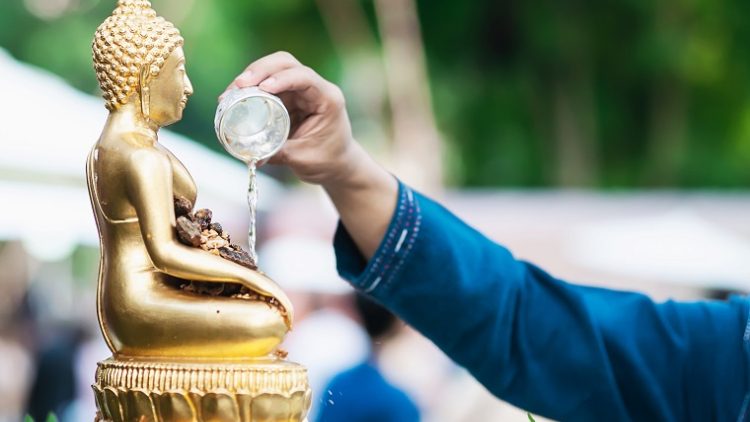BUDDHISM | The nature of Buddha
Buddha’s birth is celebrated in the month of Vesak (May-June in the Gregorian calendar). This commemorative act is called Vaisakha, the fourth month in the most widespread sun-moon calendar among Buddhist communities. In Vajrayana Buddhism, Vesak is also called Saka Dawa (literally, fourth month).
Traditionally, the Vesak festival not only celebrated Buddha’s birth but also the day on which he achieved enlightenment and the day on which he died. The three events may have taken place during the full moon of the same month.
The celebration of Vesak is characterised by speeches, meditation, offerings and reciting chants that recall and pay homage to Buddha. In some Buddhist communities, this act is usually accompanied by the ritual bathing of a statue of Buddha and recitals.
Buddhism regards human compost as an accumulation of veils or illusions (maya), similar to the layers of an onion. None of these veils define us, and due to their impermanence, neither can we identify ourselves with them. Only the centre of our being expresses our true enlightened identity, which is beyond all formal or emotional representation and can only be grasped by the intellect (buddhi). Buddhism refers to this identity as Buddha nature (Buddhadhatu).
Huge efforts have been made to describe this Buddha-nature in the course of Buddhism’s history. The most common approach is to identify it by the Sanskrit term sunyata, which embraces the ideas of emptiness, vacuity, negation or indetermination. The illumination, achievement and awakening of the “luminous mind” therefore consists in understanding the vacuity of all these veils that surround and eclipse us. By virtue of being unconditioned and being beyond all causal connections (samsara), it is also called the ‘pure mind’ (visuddhi).
Buddhist tradition believes there were many Buddhas before the historical Buddha, Siddharta Gautama ( 7 ct. BC). Likewise, it is hoped there will be many more Buddhas in the future. This indefinite plurality of Buddhas is symbolically expressed by the “thousand Buddhas” or thousand petals of the subtle centre of the crown (sahasrara chakra). All the historical forms are an expression of one and the same essence found as a seed in each person. In fact, according to Buddhism, Every human being is potentially a Buddha.
Some western historians of Buddhism believe the expression “Buddha-nature” is not found in the original sermons of Siddharta Gautama. Nevertheless, all schools of Buddhism are unanimous in believing that, beyond terminological concerns, the “Buddha-nature” doctrine is the basic substratum of Buddhist teachings.
Buddhism also uses the concept of “Living Buddha” to express achieving enlightenment or realising Buddha-nature. In that regard, it is similar to the concept of bodhisattva, although this term is usually used to refer to a person who, having achieved self-realisation, renounces Nirvana out of compassion for other beings.
The title “living Buddha” is often used too to refer to people famous for their knowledge and piety, somewhat like a saint.
The concept of “living Buddha” must not be confused with a series of practices that lead to the prolongation of conscious death, found in many Buddhist communities, especially Tibet (fowa) and Japan (sokushinbutsu). These practices usually have a strong ascetic component that can lead to the body being in a state of true mummification.

